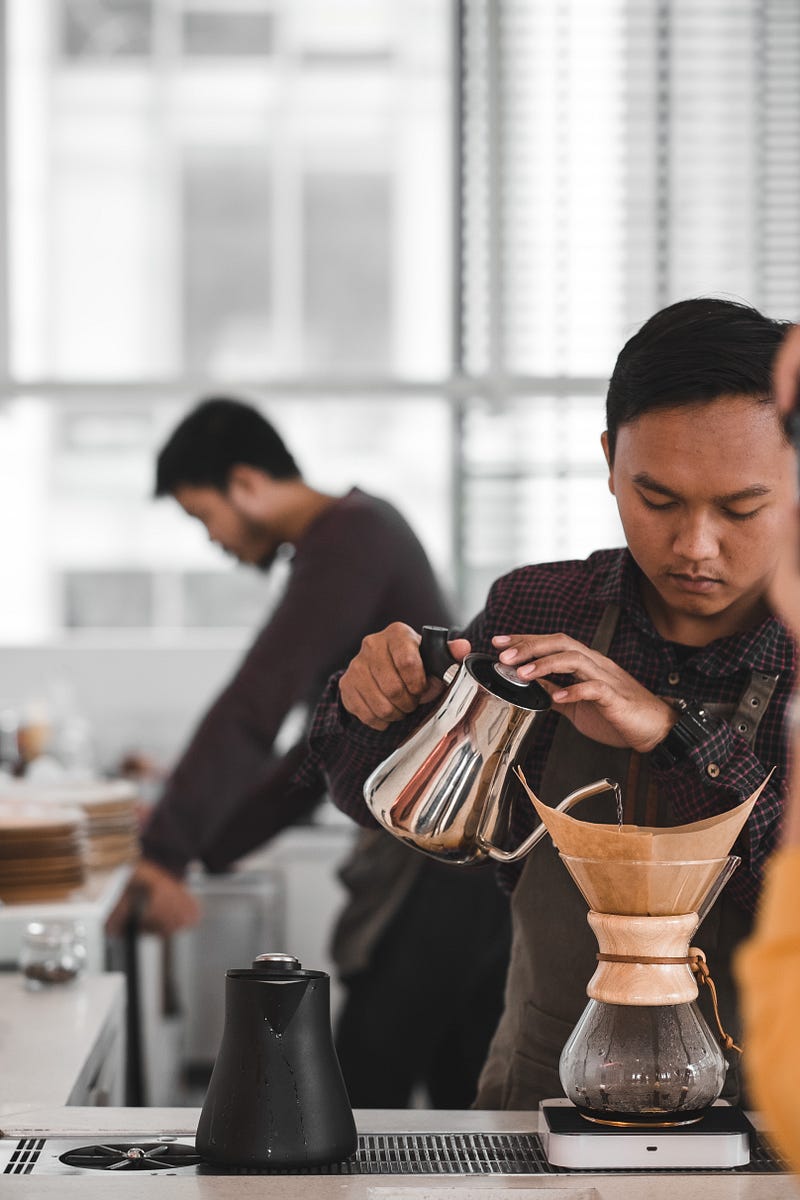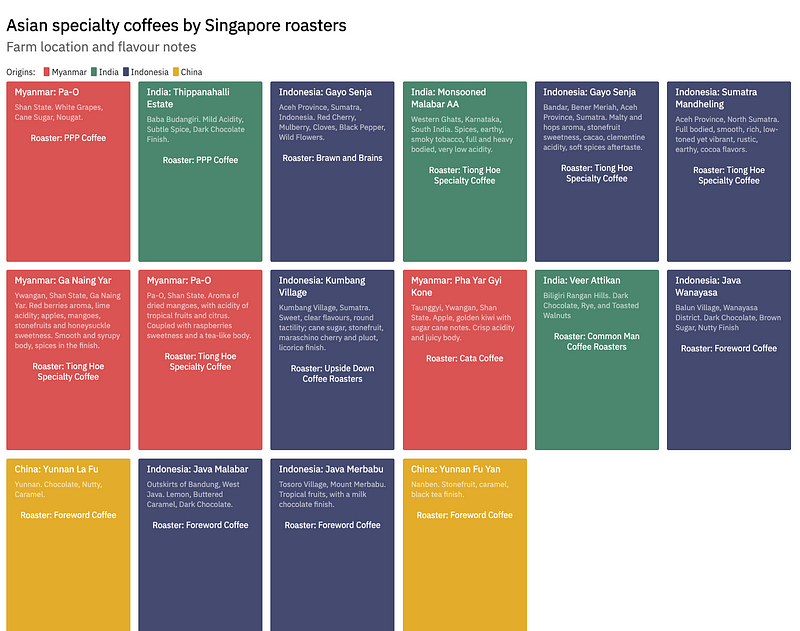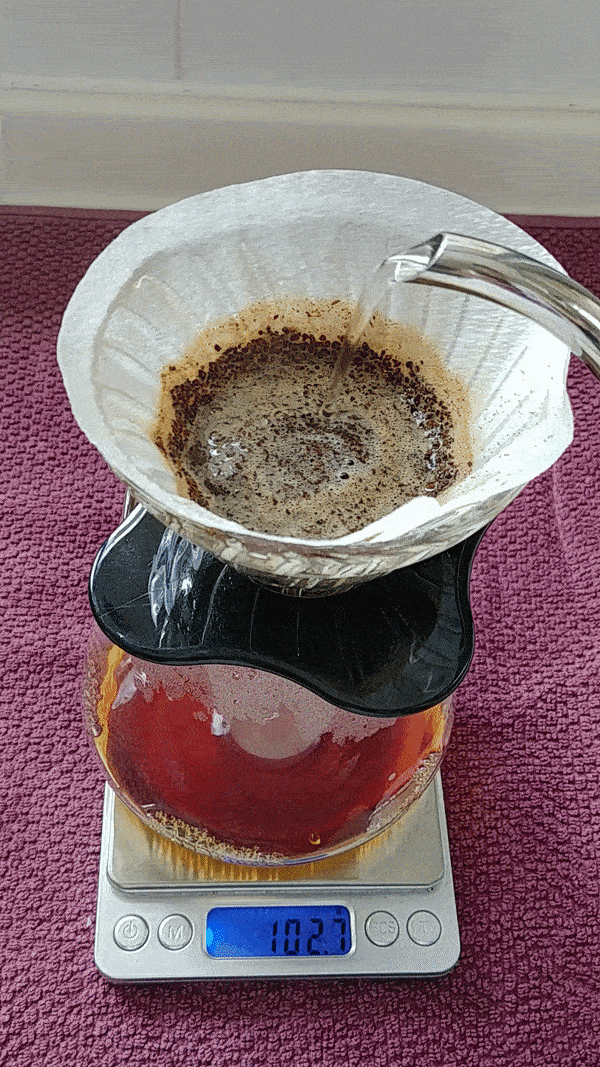
Asian specialty coffee—that’s a thing?
Your local coffee shop roasts local beans, too
Asian-grown specialty coffee—that’s a thing?
Here at Kontinentalist, we adore coffee.
Some time ago, we ran a story on shade-grown coffee as a catalyst for wildlife conservation in Java, Indonesia. In the months since then, the team has downed countless mugs of the stuff in various forms.
Kontinentalist’s coffee orders:
Bella: Double espresso, coconut coffee
Dylan: Latte, yuan yang (tea and coffee with milk), Khao Shong (Thai instant coffee)
Griselda: Luwak White Koffie (instant coffee)
Gwyneth and Aishah: Super (instant coffee)
Kenneth: Pourover with beans from local roasters
Peiying: Chye Seng Huat Hardware’s cold brew, hot lattes with oat milk, kopi-peng-siu-dai (traditional iced coffee with less sugar)
Zafirah: Old Town Instant Coffee, latte with oat milk, French press
Asia’s coffee cultures are diverse, no doubt about it. From Vietnamese Cà Phê Trứng (coffee with egg) and drip coffee with condensed milk to Singapore and Malaysia’s sock-strained kopi roasted with sugar and margarine, the region offers any number of ways to caffeinate up. Our team’s preferences, though wide-ranging, barely scratch the surface of what Asia has to offer.

The rise of Third Wave coffee in Asia
As globalisation brings coffee cultures ever closer, Asia has seen a surge in demand for Western-style coffee. Espresso machines and pour-over brewers have become standard fare in cafes today, and Third Wave coffee, a movement with roots in the US, has become commonplace in many cities alongside traditional coffee outfits. Third Wave shops and consumers value coffee quality, direct trade, sustainability, and customer service. Their preference for lighter roasts and innovative brewing techniques brings out the subtler flavours in specialty coffee — coffees that score above 80 out of 100 in the Specialty Coffee Association’s quality scale.
At first glance, Third Wave coffee seems like a more conscious—and some say more pretentious—way to get tasty, quality brews. Even so, the movement does have its blind spots.
As Third Wave coffee grows more and more popular here, I’ve noticed that specialty coffee grown in Asia either gets ignored or tends to draw a bad rep, as it’s often associated with low-quality commodity coffee. For most people, Asian coffee’s traditional forms come to mind far easier than its specialty coffee producers and coffee shops, though the latter are admittedly much smaller.
Many in the region don’t even realise that farmers in Asia are producing specialty coffee at all.
For this reason—and partly because most coffee growers in Asia have not yet taken on the sophisticated practices of producers in other regions—specialty coffee shops all over the world favour coffee from regions more familiar to Third Wave consumers: Africa, Central America, and South America.
In a quick survey of ten coffee roasters whose baristas participated in the Singapore Brewer’s Cup (a black-coffee competition that showcases the nuances of different coffees through baristas’ skill), Asian-grown coffees account for just over 15 percent of the specialty beans they offered over the past year.
The relative obscurity of Asian specialty coffee is a pity, because this traps Asian coffee producers in a bind that can be hard to break. After all, it’s difficult to make the labour and infrastructure investments necessary to produce specialty coffee without already having the higher margins and visibility that specialty coffee brings.
Where can I go to support Asian specialty coffee?
Now that Singapore is halfway through its COVID-19 circuit-breaker measures, many of us have started brewing our own coffee at home. I figured I’d look into some of my favourite roasters in Singapore and sniff out their Asian coffee offerings.
The usual suspects (Indonesia and India) are well-represented, but check out these coffees from Myanmar — increasingly recognised as an up-and-coming specialty coffee producer — and some intriguing flavours from China, too!

Here’re some links to these roasters’ online stores, where you can grab yourself a bag:
- Brawn and Brains
- Cata Coffee
- Common Man Coffee Roasters
- Foreword Coffee
- PPP Coffee
- Tiong Hoe Specialty Coffee
- Upside Down Coffee Roasters (Instagram)
Today, food and beverage businesses everywhere are struggling to stay afloat in the as the COVID-19 situation intensifies, with some Singaporean restaurants projecting revenue losses of up to 80 percent over the next three months. Coffee roasters are no exception. Whether you are a long-time specialty coffee drinker or just newcomer to brewing at home, if you’ve ever wanted to try quality Asian coffee from local roasters, growers, and producers, here’s your chance.
Drink up, fellow brew hounds. If you know of any local roasters doing great work with Asian coffee beans, please let us know in the comments. We’ll take any reason to caffeinate up.
For the truly geeky, here’s my work-in-progress brewing recipe, a variation of this guide by local roaster Quarter Life Coffee. The recipe I use is neither the simplest nor most complex one, and it certainly isn’t the best one. But it’s mine—and now it can be yours.
Kenneth’s V60 recipe

Ratio: 12.5g coffee to 200g water (1:16).
Water temperature: Depends on the bean, but 93C is a good starting point.
Method:
Place your filter paper in your drip cone and wash it with hot water. This pre-heats the cone and rinses out any papery taste from the filter.
0:00 — Pour 36g of water in fast circles around the coffee bed to wet the coffee grounds evenly. Grab the top of the cone (careful not to scald yourself) and swirl the coffee gently.
0:30 — Pour 62g of water to 100g total, in slow concentric circles. Do another gentle swirl.
For the next steps, you can pour in 30s intervals, or when the water drains and you can see all of the coffee bed again. Either works.
1:00—Pour 60g of water to 160g total. This time, make one round around the rim to wash down any “high and dry” grounds on the brewer’s walls, then pour straight down the centre until you hit 160g on the scale.
1:30—Pour the last 40g of water to 200g total, making one round around the rim and going straight down the centre afterwards. Give the brewer a gentle swirl and a tap on the cup to settle the grounds, then wait.
Pre-heat your cup with some hot water. Anticipate. Try not to drool.
The coffee should drain between 2:30 and 3:00 to give a balanced, delicate cup. Different coffees will drain at different rates, so don’t fret about this too much. If the coffee doesn’t suit your taste the first time, not to worry. Matt Perger, 2012 World Brewer’s Cup champion and founder of coffee education platform Barista Hustle, has created a nifty coffee compass that’ll help you tweak your brew to taste.
Happy brewing, folks!

